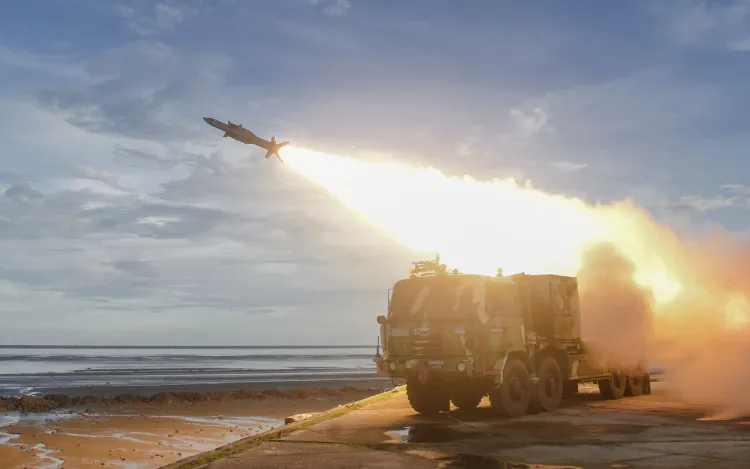Did India Successfully Test the Indigenous ‘Akash Prime’ Air Defence System in Ladakh?

Synopsis
Key Takeaways
- Successful trial of the indigenous Akash Prime air defence system.
- Conducted at an altitude of 15,000 feet in Ladakh.
- Direct hits on two high-speed aerial targets.
- Integration into the Army’s Akash Regiments.
- Strengthens India’s aerial security amidst regional tensions.
New Delhi, July 16 (NationPress) India has reached a remarkable milestone in bolstering its air defence capabilities through the successful trial of the indigenous ‘Akash Prime’ air defence system this past Wednesday.
The Indian Army executed the test at an altitude of approximately 15,000 feet in the Ladakh region. Developed by the Defence Research and Development Organisation (DRDO), the Akash Prime system was evaluated in the presence of high-ranking officials from the Army’s Air Defence branch and DRDO. This achievement signifies a substantial leap forward in India’s quest for a self-reliant defence infrastructure.
During the evaluation, surface-to-air missiles from the system achieved direct hits on two high-speed aerial targets, showcasing exceptional precision. The trial was conducted in the rarefied atmosphere and extreme conditions of the high-altitude terrain, where even basic operations can pose challenges.
Defence officials have indicated that the Akash Prime system will be integrated into the Indian Army’s third and fourth Akash Regiments, thereby amplifying the nation’s air defence shield.
Importantly, India’s Akash air defence system played a crucial role during Operation Sindoor, effectively countering aerial assaults that involved Chinese fighter jets and Turkish drones utilized by Pakistani forces.
Defence analysts assert that this successful trial not only highlights India’s indigenous defence capabilities but also significantly bolsters the nation’s aerial security readiness.
India is committed to enhancing self-reliance in UAV and C-UAS-related defence technologies. To decrease its dependency on imports for critical components, the Ministry of Defence recently hosted a Workshop and Exhibition. This initiative marks a significant step towards the indigenization of critical components currently being imported in the UAV and C-UAS sectors.
The exhibition took place at the Manekshaw Centre in New Delhi, led by the Headquarters Integrated Defence Staff (HQ IDS) in partnership with the Centre for Joint Warfare Studies (CENJOWS). The event aimed to minimize India’s reliance on foreign Original Equipment Manufacturers (OEMs) for essential components employed in Unmanned Aerial Vehicles (UAVs) and Counter-Unmanned Aerial Systems (C-UAS).
This initiative was prompted by the recent Operation Sindoor, amidst escalating tensions between India and Pakistan, where UAVs and C-UAS systems proved vital. These platforms were essential for providing real-time situational awareness, conducting precision strikes, and ensuring the safety of human lives, thereby showcasing the robustness and readiness of India’s homegrown defence technologies in active operations.










